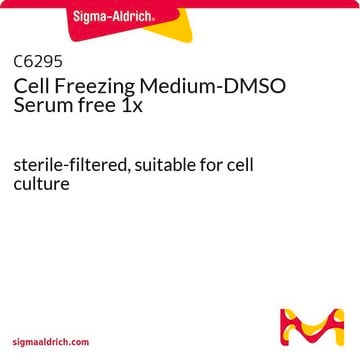W387520
Diméthylsulfoxyde
≥99%, FG
Synonyme(s) :
DMSO, Sulfoxyde de méthyle
About This Item
Produits recommandés
Source biologique
synthetic
Niveau de qualité
Qualité
FG
Halal
Agence
meets purity specifications of JECFA
Conformité réglementaire
EU Regulation 1334/2008 & 178/2002
FDA 21 CFR 172.859
Densité de vapeur
2.7 (vs air)
Pression de vapeur
0.42 mmHg ( 20 °C)
Pureté
≥99%
Température d'inflammation spontanée
573 °F
Limite d'explosivité
42 %, 63 °F
Indice de réfraction
n20/D 1.479 (lit.)
Point d'ébullition
189 °C (lit.)
Pf
16-19 °C (lit.)
Densité
1.10 g/mL (lit.)
Application(s)
flavors and fragrances
Documentation
see Safety & Documentation for available documents
Allergène alimentaire
no known allergens
Propriétés organoleptiques
fatty; garlic; mushroom; oily; cheesy
Chaîne SMILES
CS(C)=O
InChI
1S/C2H6OS/c1-4(2)3/h1-2H3
Clé InChI
IAZDPXIOMUYVGZ-UHFFFAOYSA-N
Vous recherchez des produits similaires ? Visite Guide de comparaison des produits
Application
- Dimethyl Sulfoxide (DMSO) as a Potential Source of Interference in Research Related to Sulfur Metabolism-A Preliminary Study.: This study investigates the potential interference of DMSO in sulfur metabolism research, highlighting its impact on experimental outcomes. (Kaczor-Kamińska et al., 2024).
Attention
Code de la classe de stockage
10 - Combustible liquids
Classe de danger pour l'eau (WGK)
WGK 1
Point d'éclair (°F)
188.6 °F - closed cup
Point d'éclair (°C)
87 °C - closed cup
Faites votre choix parmi les versions les plus récentes :
Déjà en possession de ce produit ?
Retrouvez la documentation relative aux produits que vous avez récemment achetés dans la Bibliothèque de documents.
Les clients ont également consulté
Notre équipe de scientifiques dispose d'une expérience dans tous les secteurs de la recherche, notamment en sciences de la vie, science des matériaux, synthèse chimique, chromatographie, analyse et dans de nombreux autres domaines..
Contacter notre Service technique

